The Python structure - Vocabulary, tips and comments
- Python code can be written in two different “containers”:
- Interactive interpreter (not permanent)
- Modules or programs (permanent)
-
The content of a module can be used in a script (or in a different module) by importing the module
-
Scripts, programs, modules can be written in text files.
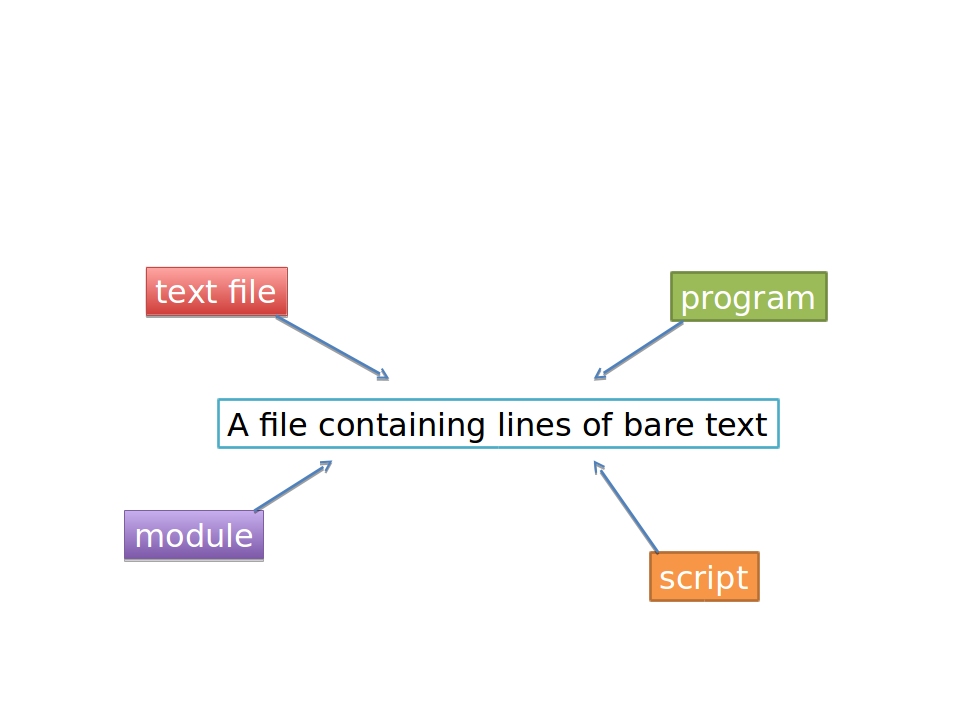
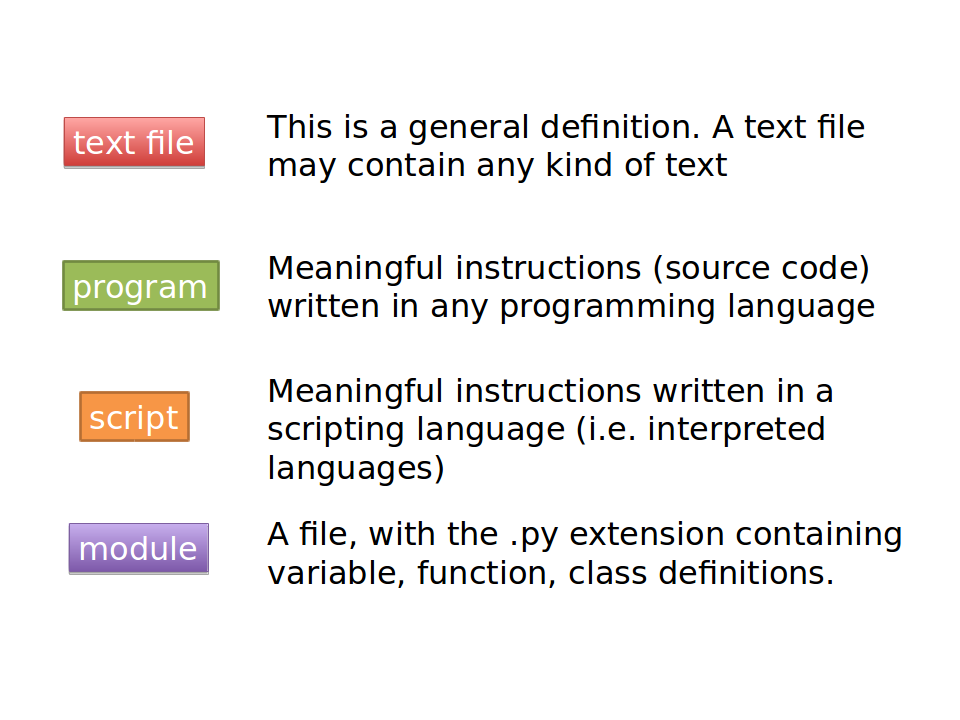
-
Inside modules you can define other containers: classes and functions.
-
More in general, modules are containers for data, functions and classes.
-
In other words, we will call modules text files containing definitions of data (through variable’s assignment), functions and classes.
-
We will call programs or scripts text files containing definitions AND actions.
-
You will run programs and import modules.
-
When you
importa module, Python reads and executes each line contained therein. -
It is good practice to write small re-usable pieces of code in separate modules and connect them through the
importstatement and the dot syntaxt. - The objects contained in modules (and, if you want to, in classes and functions) are: data structures; variable definitions; operators; control flow statements.
The “dot” syntax
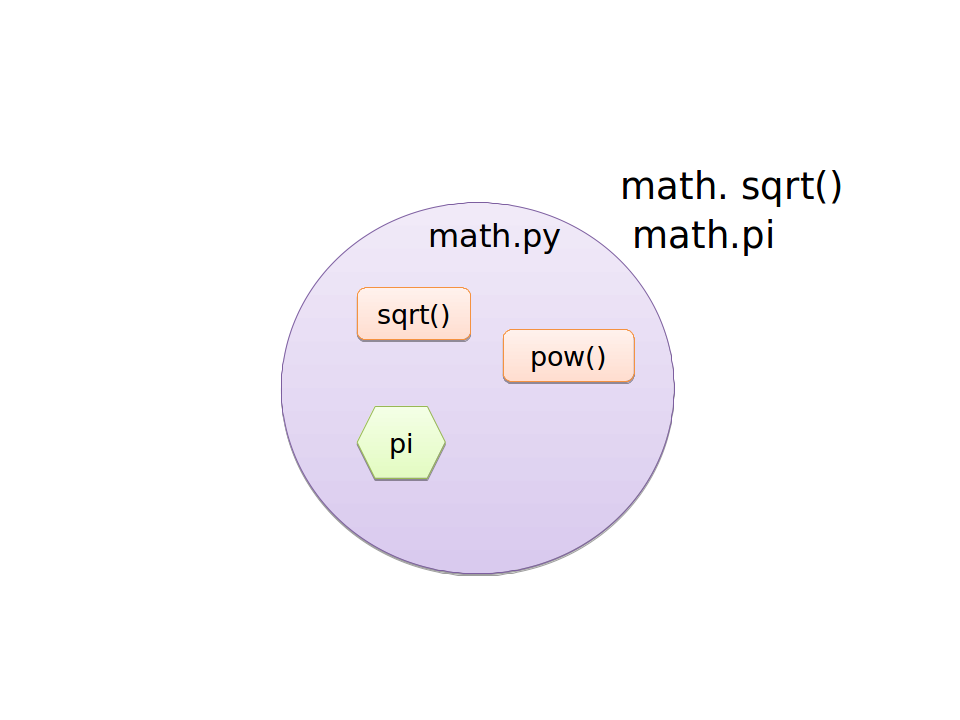
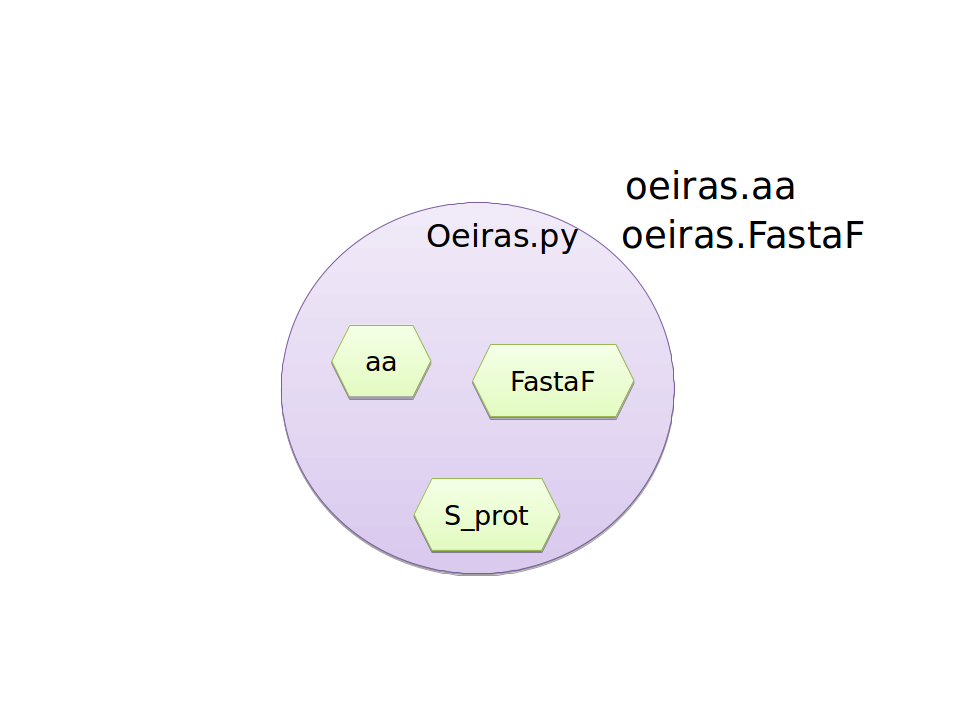
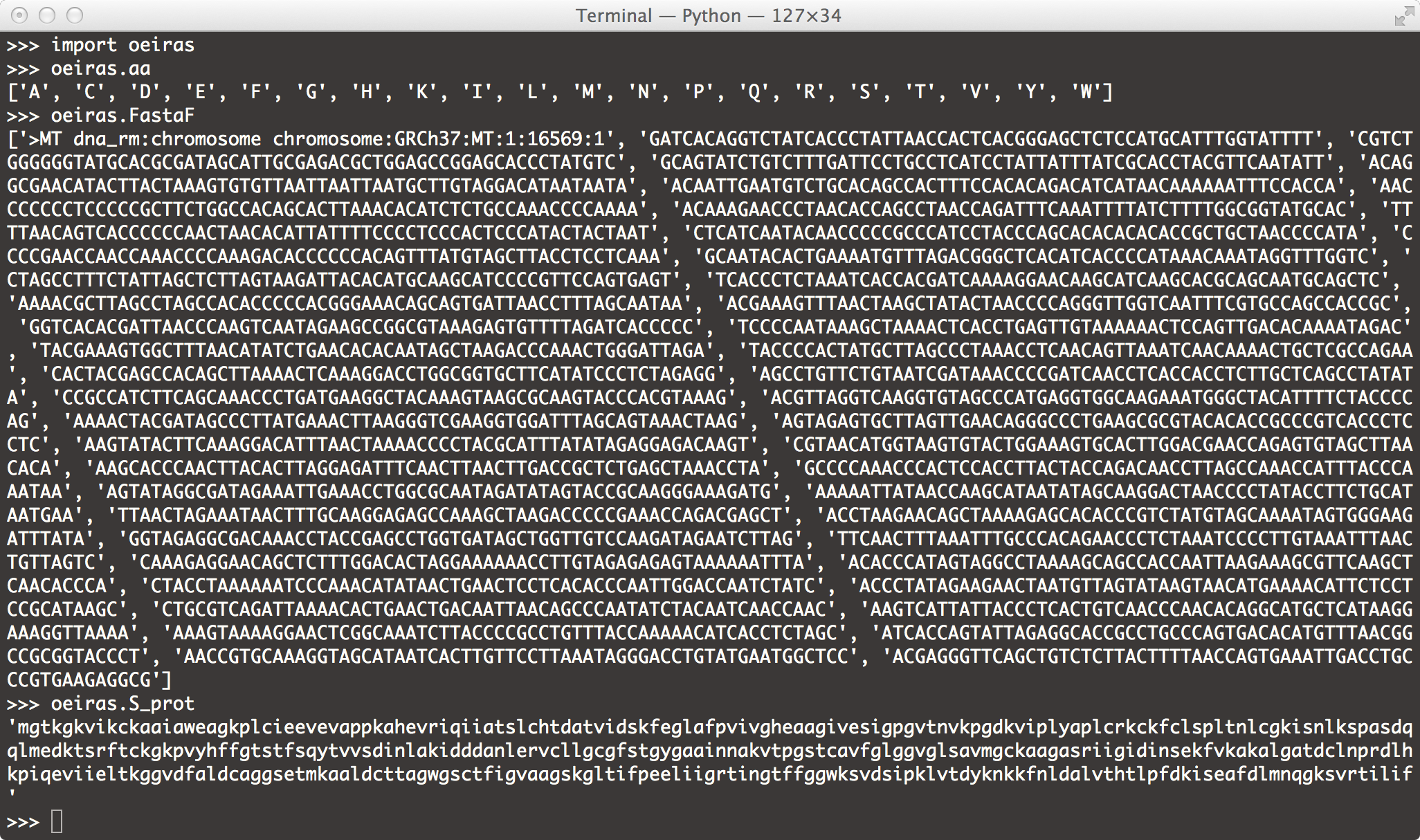
The matryoshka doll-like structure of Python
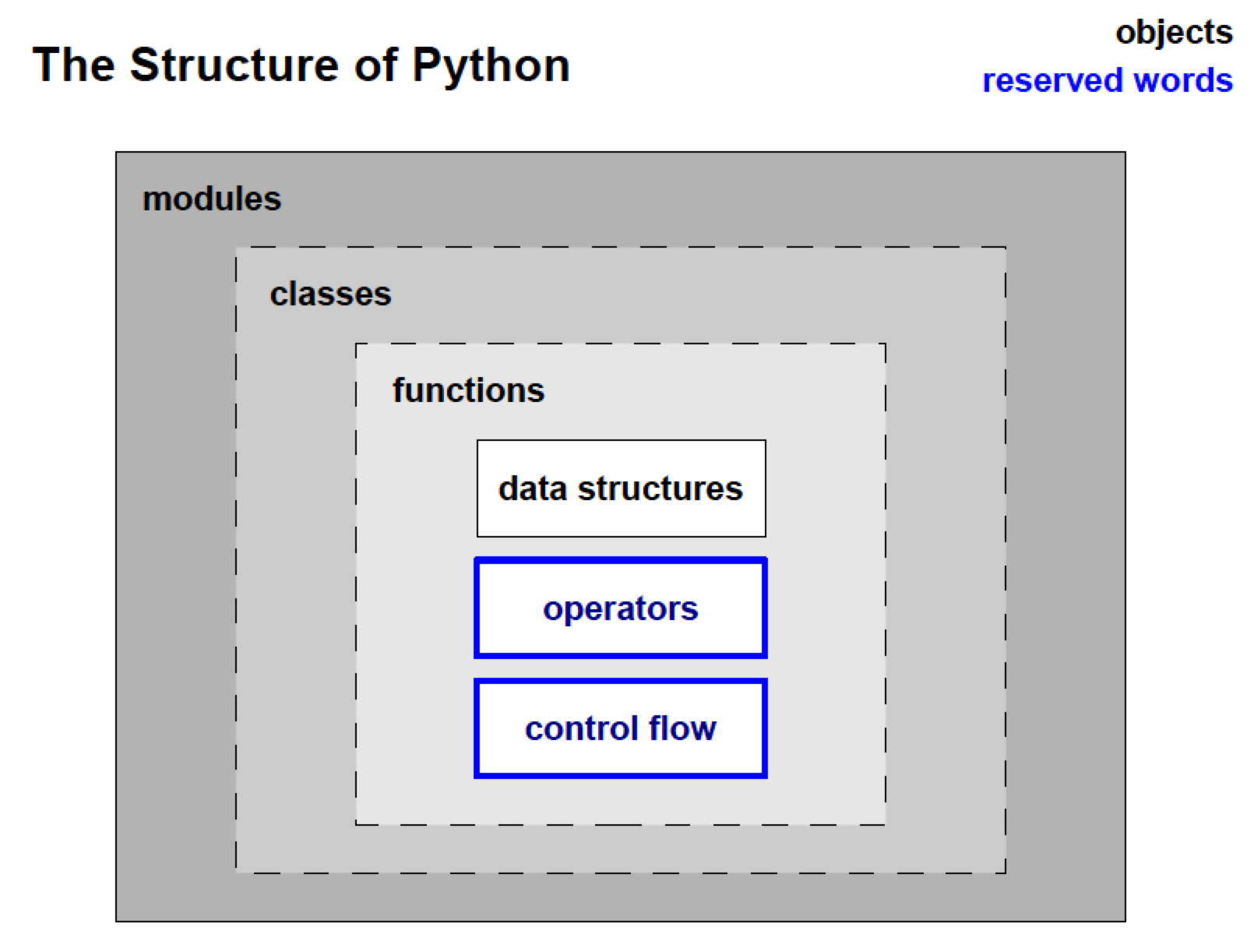
module.class.method()
module.method()
class.method()
module.variable
module.class.variable
Challenge
- Open a text file using gedit
- Write:
print "My name is:", "myname"
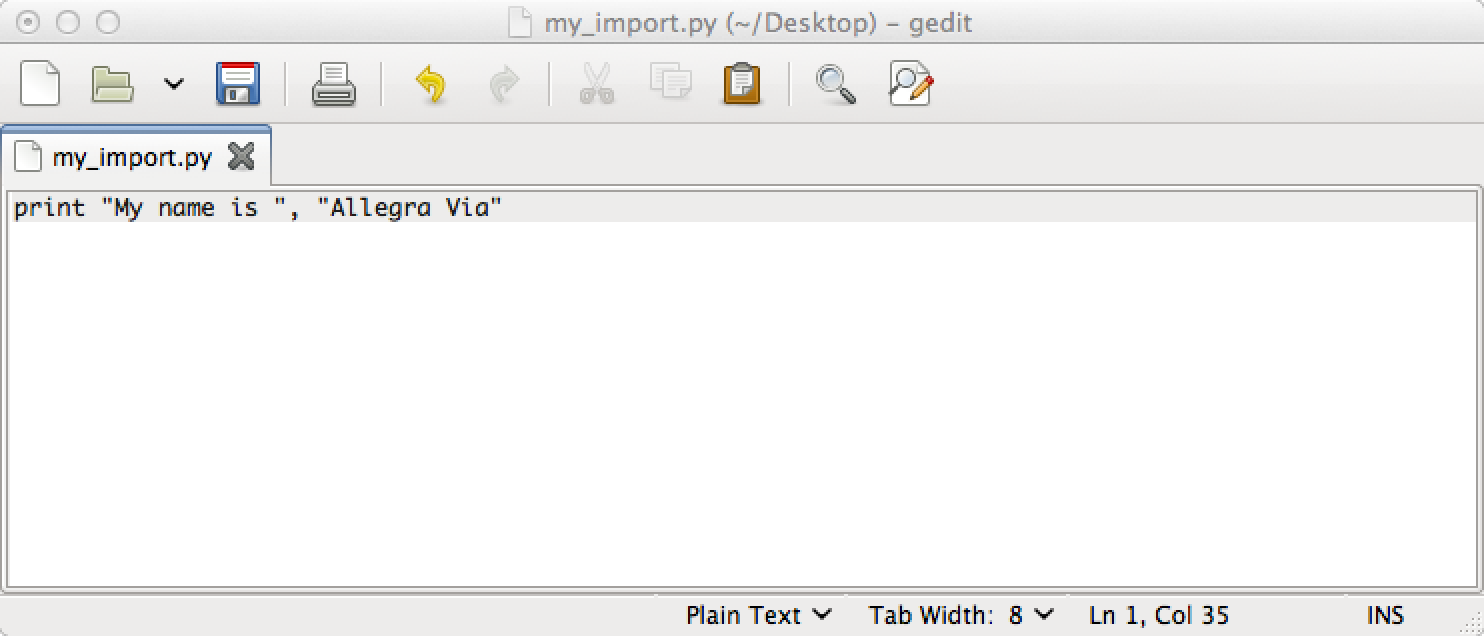
- Save the file in your home directory with the name:
my_name.py- Go to your home directory using the command-line interface
- Type at the prompt:
python my_name.py- Open a DIFFERENT text file using gedit
- Write:
import my_name
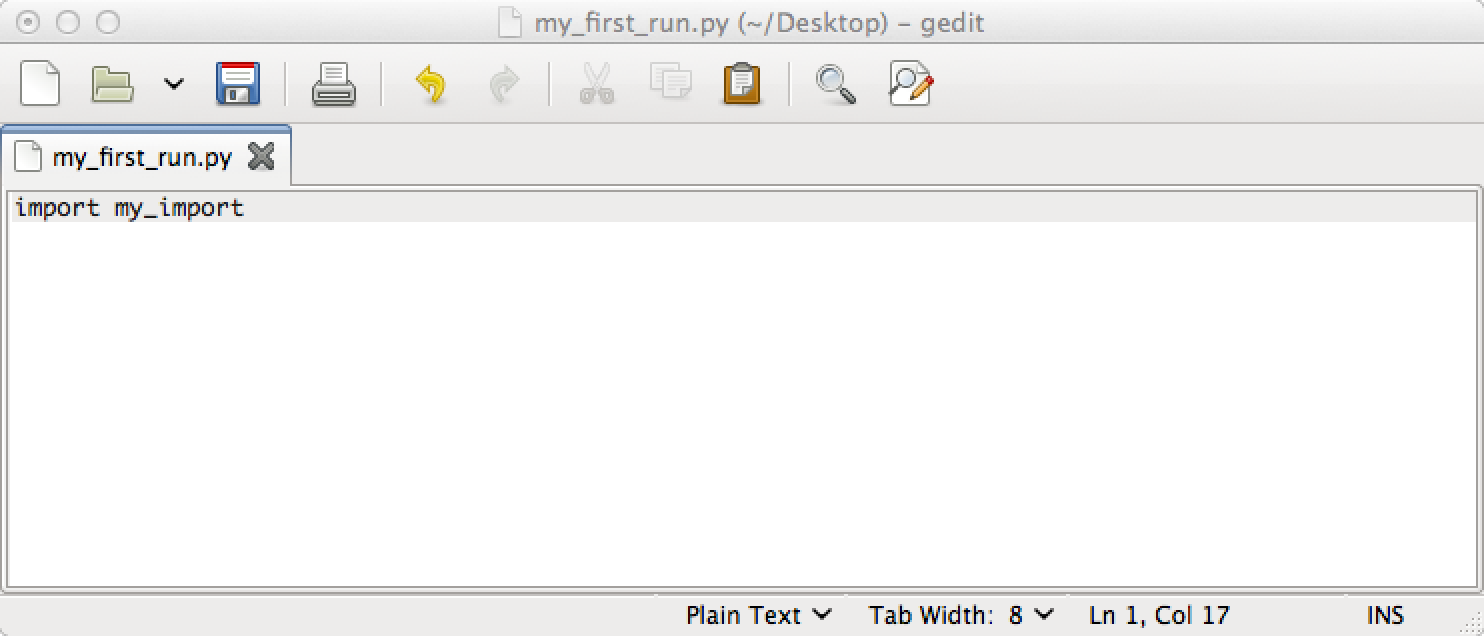
- Save the file in your home directory with the name:
my_first_run.py- Go to your home directory using the command-line interface
- Type:
python my_first_run.py
Back
Back to main page.